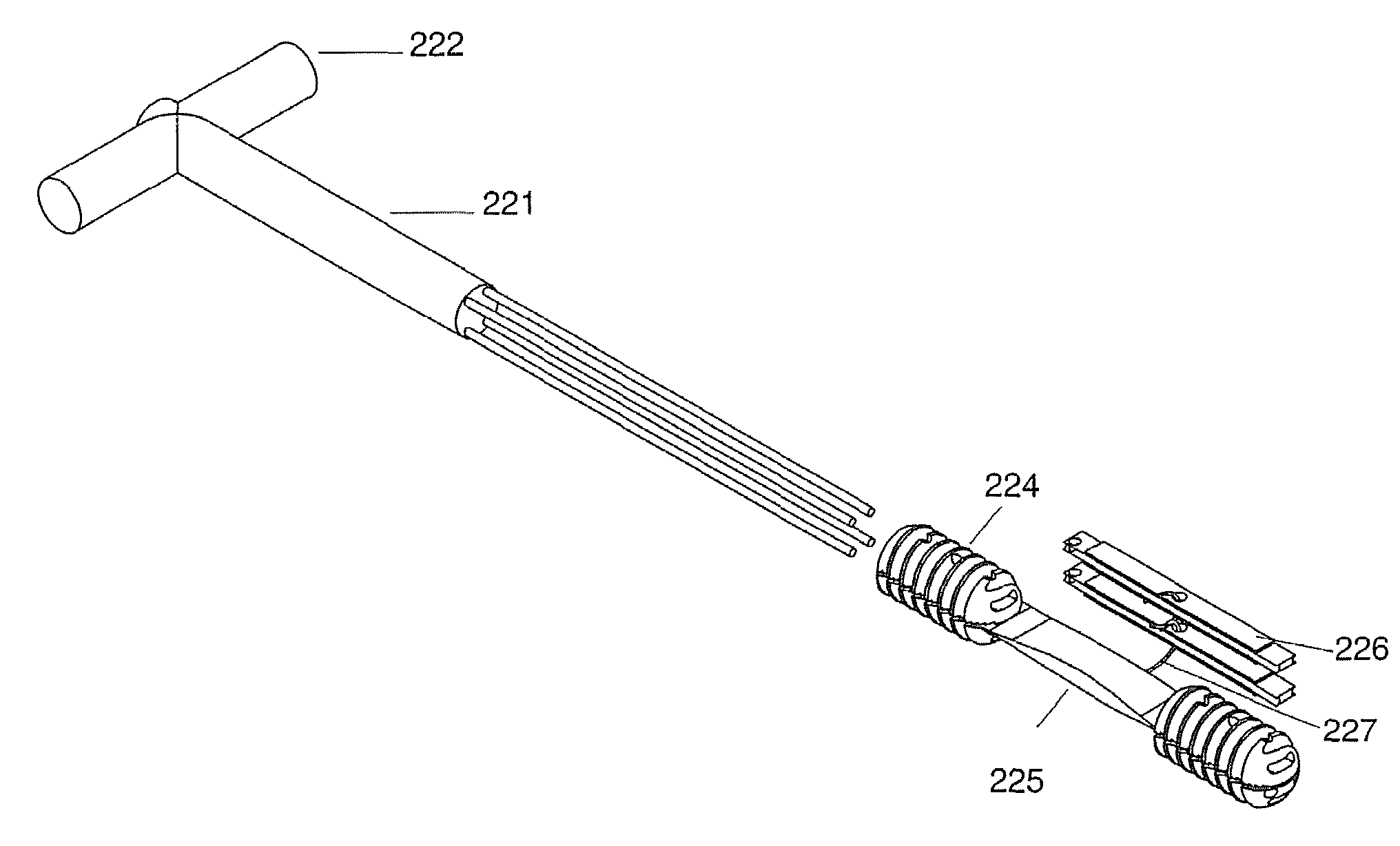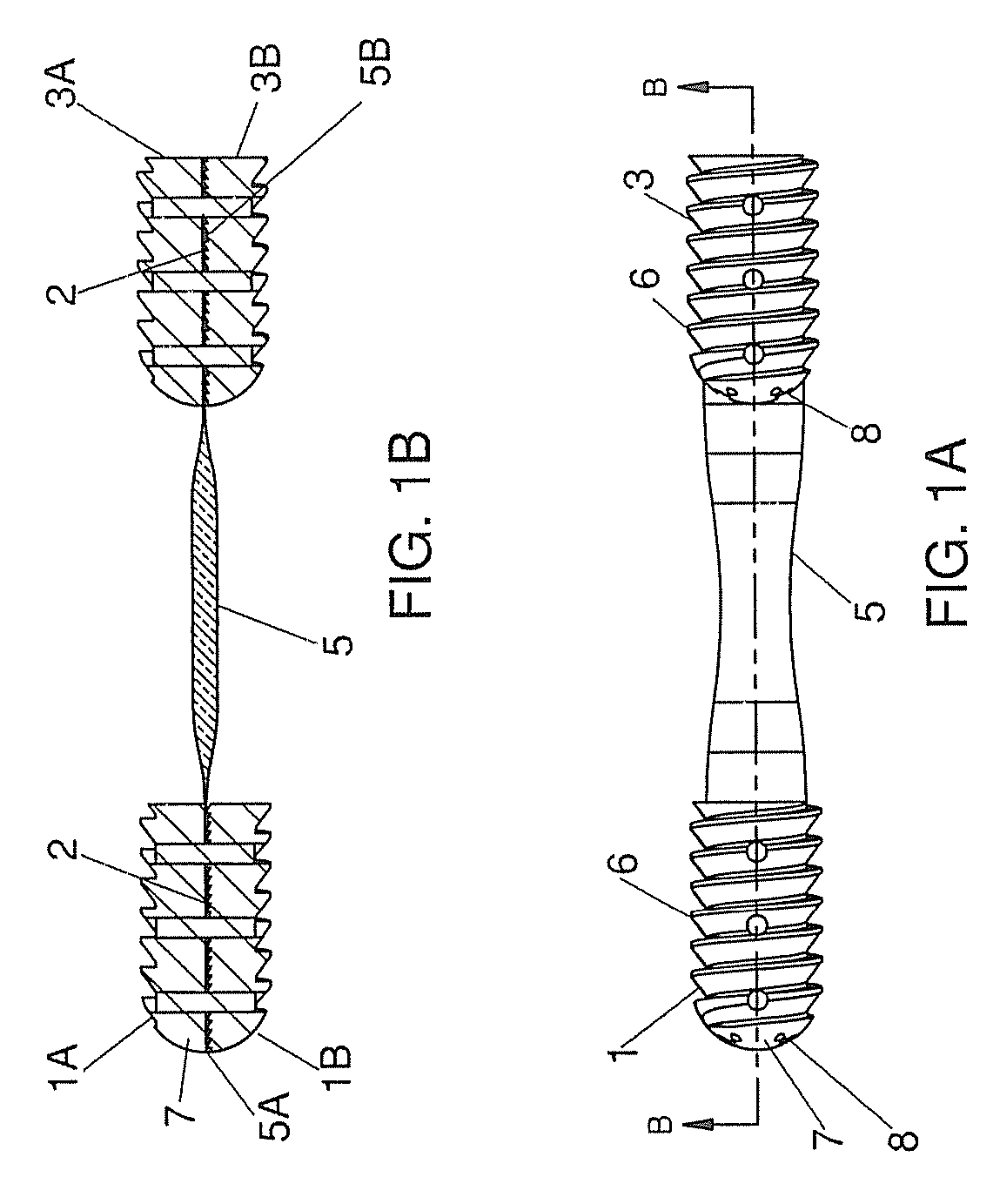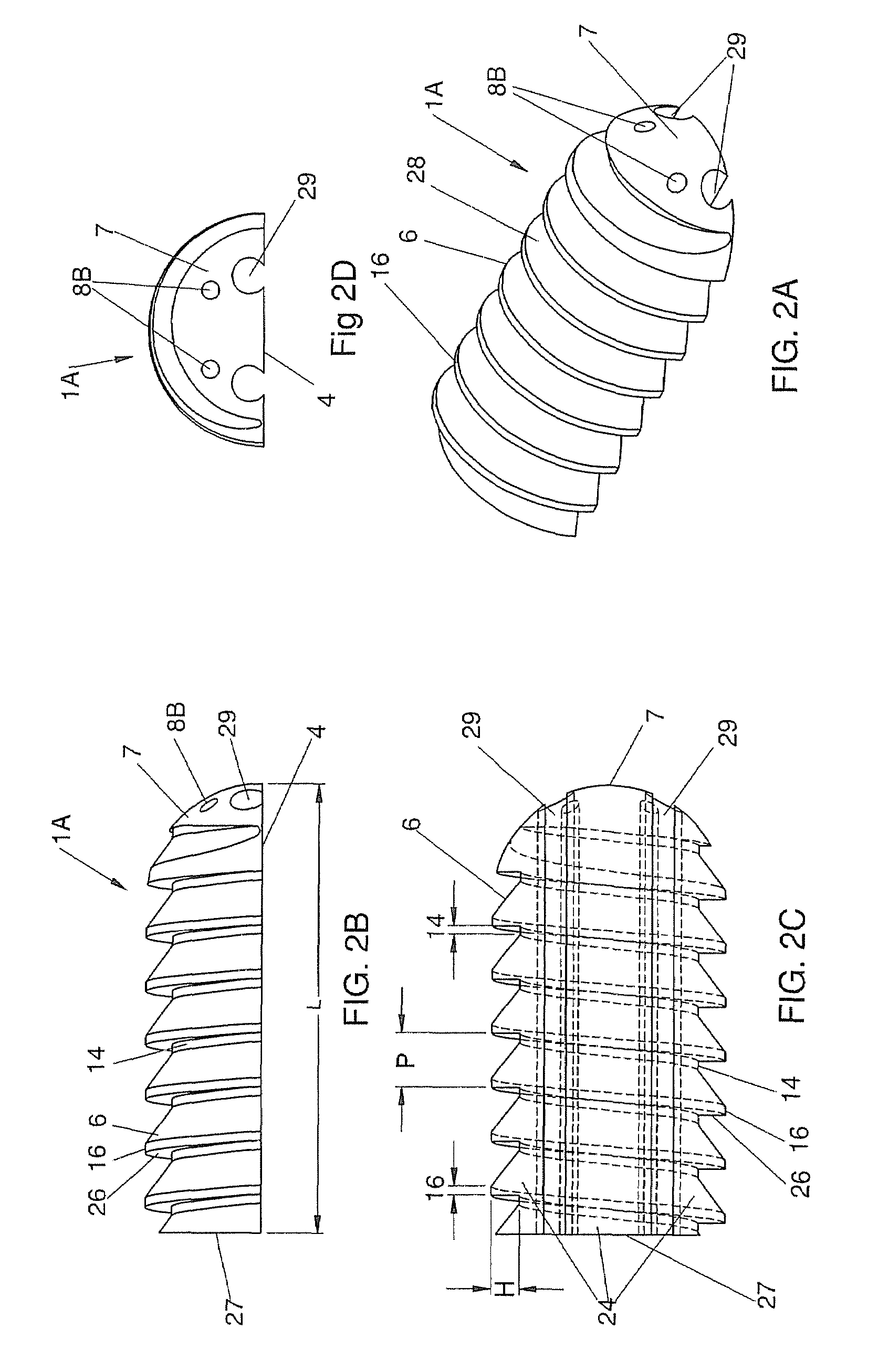Self fixing assembled bone-tendon-bone graft
a bone-tendon and bone graft technology, applied in the field of bone-tendonbone implants and grafts, can solve the problems of difficult assembly of the second site of morbidity, difficult preparation of the implantation site, and high recovery cost of human allograft materials, so as to reduce tissue stress during assembly and use, easy to manufacture, and simple effect of
- Summary
- Abstract
- Description
- Claims
- Application Information
AI Technical Summary
Benefits of technology
Problems solved by technology
Method used
Image
Examples
examples
Implantation Procedures
[0172]The details of surgical procedures appropriate for use in implanting BTB implants and grafts of the present invention vary depending upon the specific application. One example of a suitable procedure is provided here.
[0173]With the knee in approximately 90 degrees of flexion an incision approximately 2 cm in length is made medial to and just below the tibial tuberosity. The soft tissue is retracted and a small diameter guide pin is driven through the incision proximally to exit through the natural insertion point of the ACL on the tibial plateau. Typically the guide pin is then utilized to direct larger drills along its course sequentially increasing the size of the tibial tunnel. The guide pin is then introduced into the tibial tunnel to pass though the intra-articular space to a point deep in the posterior portion of the intra-condylar notch at the point of the origin of the natural ACL. The guide pin is then driven into the metaphyisis of the femur in...
PUM
 Login to View More
Login to View More Abstract
Description
Claims
Application Information
 Login to View More
Login to View More - R&D
- Intellectual Property
- Life Sciences
- Materials
- Tech Scout
- Unparalleled Data Quality
- Higher Quality Content
- 60% Fewer Hallucinations
Browse by: Latest US Patents, China's latest patents, Technical Efficacy Thesaurus, Application Domain, Technology Topic, Popular Technical Reports.
© 2025 PatSnap. All rights reserved.Legal|Privacy policy|Modern Slavery Act Transparency Statement|Sitemap|About US| Contact US: help@patsnap.com



